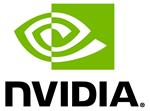
COMPUTEX -- NVIDIA today announced widespread adoption of the NVIDIA Spectrum™-X Ethernet networking platform as well as an accelerated product release schedule.
CoreWeave, GMO Internet Group, Lambda, Scaleway, STPX Global and Yotta are among the first AI cloud service providers embracing NVIDIA Spectrum-X to bring extreme networking performance to their AI infrastructures. Additionally, several NVIDIA partners have announced Spectrum-based products, including ASRock Rack, ASUS, GIGABYTE, Ingrasys, Inventec, Pegatron, QCT, Wistron and Wiwynn, which join Dell Technologies, Hewlett Packard Enterprise, Lenovo and Supermicro in incorporating the platform into their offerings.
"Rapid advancements in groundbreaking technologies like generative AI underscore the necessity for every business to prioritize networking innovation to gain a competitive edge," said Gilad Shainer, senior vice president of networking at NVIDIA. "NVIDIA Spectrum-X revolutionizes Ethernet networking to let businesses fully harness the power of their AI infrastructures to transform their operations and their industries."
Annual Release Cadence
Spectrum-X is the world's first Ethernet fabric built for AI, accelerating generative AI network performance by 1.6x over traditional Ethernet fabrics.
To meet the industry's strong demand for the performance Spectrum provides, NVIDIA founder and CEO Jensen Huang today announced during his COMPUTEX keynote in Taiwan that NVIDIA plans to launch new Spectrum-X products every year, delivering increased bandwidth and ports and enhanced software feature sets and programmability to drive leading AI Ethernet networking performance.
Featuring the NVIDIA Spectrum SN5600 Ethernet switch and the NVIDIA BlueField ® -3 SuperNIC , Spectrum-X is an end-to-end platform built with the performance and features required by generative AI clouds. Leveraging adaptive routing and congestion control for maximum bandwidth and noise isolation, it offers the highest-performance Ethernet networking for AI, providing predictable outcomes for thousands of simultaneous AI jobs at every scale.
Combined with NVIDIA BlueField-3 DPUs , the platform enables advanced cloud multi-tenancy, GPU compute elasticity and zero-trust security. With it, cloud service providers can accelerate the development and deployment of AI solutions while improving their return on investment.
Learn more about NVIDIA Spectrum-X during Huang's keynote address at COMPUTEX .
About NVIDIA
NVIDIA (NASDAQ: NVDA) is the world leader in accelerated computing.
For further information, contact:
Alex Shapiro
Public Relations
NVIDIA Corporation
+1-415-608-5044
ashapiro@nvidia.com
Certain statements in this press release including, but not limited to, statements as to: the benefits, impact, performance, and availability of our products, services, and technologies, including NVIDIA Spectrum-X, NVIDIA Spectrum SN5600 Ethernet switch, NVIDIA BlueField-3 SuperNIC, and NVIDIA BlueField-3 DPUs; third parties using and adopting our technologies and products, our collaboration and partnership with third parties and the benefits and impact thereof, and the features and performance of their offerings; rapid advancements in groundbreaking technologies like generative AI underscoring the necessity for every business to prioritize networking innovation to gain a competitive edge; and NVIDIA Spectrum-X revolutionizing Ethernet networking to let businesses fully harness the power of their AI infrastructures to transform their operations and their industries are forward-looking statements that are subject to risks and uncertainties that could cause results to be materially different than expectations. Important factors that could cause actual results to differ materially include: global economic conditions; our reliance on third parties to manufacture, assemble, package and test our products; the impact of technological development and competition; development of new products and technologies or enhancements to our existing product and technologies; market acceptance of our products or our partners' products; design, manufacturing or software defects; changes in consumer preferences or demands; changes in industry standards and interfaces; unexpected loss of performance of our products or technologies when integrated into systems; as well as other factors detailed from time to time in the most recent reports NVIDIA files with the Securities and Exchange Commission, or SEC, including, but not limited to, its annual report on Form 10-K and quarterly reports on Form 10-Q. Copies of reports filed with the SEC are posted on the company's website and are available from NVIDIA without charge. These forward-looking statements are not guarantees of future performance and speak only as of the date hereof, and, except as required by law, NVIDIA disclaims any obligation to update these forward-looking statements to reflect future events or circumstances.
© 2024 NVIDIA Corporation. All rights reserved. NVIDIA, the NVIDIA logo, BlueField, and NVIDIA Spectrum are trademarks and/or registered trademarks of NVIDIA Corporation of NVIDIA Corporation in the U.S. and other countries. Other company and product names may be trademarks of the respective companies with which they are associated. Features, pricing, availability and specifications are subject to change without notice.
A photo accompanying this announcement is available at:
https://www.globenewswire.com/NewsRoom/AttachmentNg/3f71bda3-d17a-443b-99eb-7b9c08226e46
